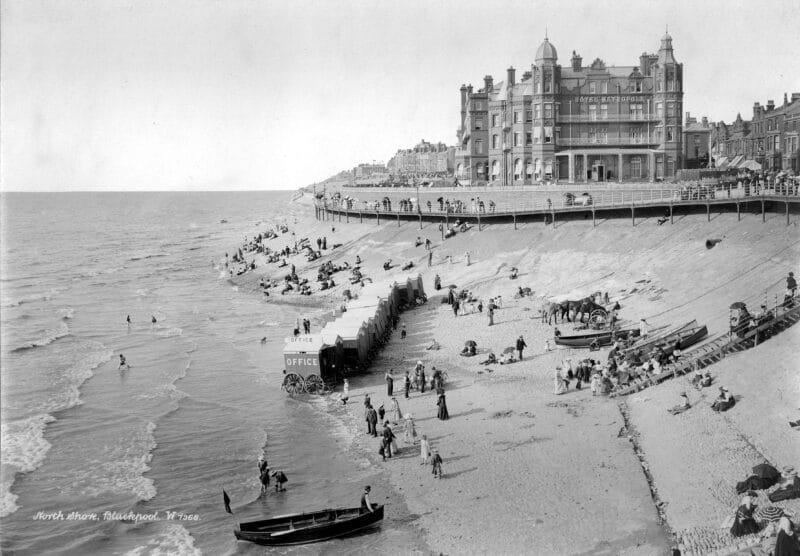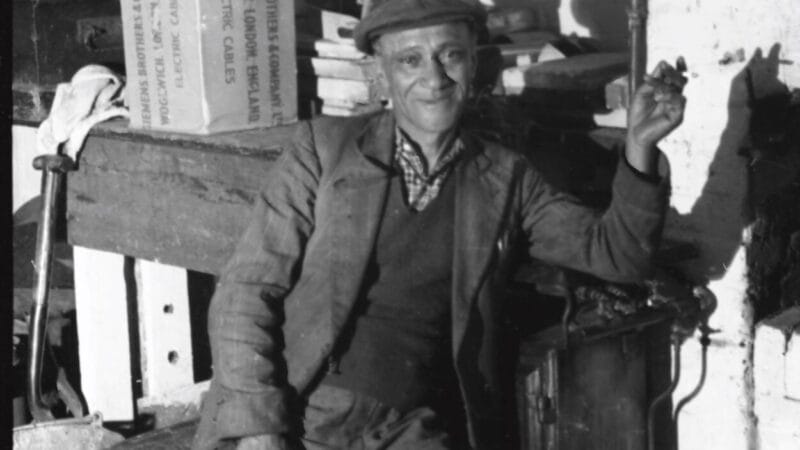Pubblicato per la prima volta su Rail Magazine
Nella nostra serie che celebra la Ferrovia 200, Buon viaggio Il fondatore Nat Taplin celebra la nascita del grande viaggio ferroviario britannico e auspica una rinascita del turismo in treno.
Prima dell'avvento delle ferrovie, solo i viaggiatori più coraggiosi tentavano una vacanza nel Devon.
Nel 1828, il viaggio in carrozza trainata da cavalli da Londra a Exeter durava circa 20 ore. In estate, le strade erano polverose e dissestate. In inverno, il fango era appiccicoso e profondo.
Quando sei arrivato alla spiaggia, il pensiero del viaggio di ritorno a casa deve averti incombeto addosso come lo smog londinese che ti eri lasciato alle spalle.
Fortunatamente, poi arrivò la ferrovia, rendendo le vacanze in tiepide città costiere come Torquay e Sidmouth molto più facili ed economiche. Il 1° maggio 1844, i primi passeggeri in treno provenienti da Londra arrivarono a Exeter, appena cinque ore e un quarto dopo la partenza da Paddington.
E non furono solo le vacanze nel Devon a trasformarsi. In tutto il paese, le nuove ferrovie hanno permesso alle persone di visitare luoghi prima difficili da raggiungere per la prima volta.
Nel 1847, il la ferrovia raggiunse Windermere nel Lake DistrictPersone provenienti da città come Newcastle, Manchester e Liverpool hanno finalmente potuto visitare i paesaggi di Wordsworth e Turner.
Sia le classi alte che quelle operaie arrivarono in massa, stringendo i biglietti del treno e ansiose di vedere le attrazioni. Le ferrovie erano arrivate, e nacquero le mete turistiche.

L'aumento degli ingorghi stradali
Oggi, molti di questi luoghi di piacere sono ancora affollati di turisti. Ma sono sempre meno quelli che arrivano in treno: gli stretti vicoli in pietra di Beatrix Potter pulsano invece del rumore e del disordine delle auto. Insieme, viziamo i luoghi speciali che abbiamo imparato ad apprezzare.
Noi di Good Journey vogliamo che più persone esplorino il territorio in treno, autobus, bicicletta e a piedi. Sappiamo che il 221% delle famiglie del Regno Unito non possiede un'auto. Meritano pari accesso a svago, natura e cultura. Stiamo collaborando con attrazioni turistiche in tutto il Regno Unito e con organizzazioni come il National Trust per migliorare l'accesso senza auto.
Una scelta ovvia
Scegliere il treno per una divertente gita di un giorno o per una vacanza dovrebbe essere una scelta ovvia.
L'avventura inizia non appena uscite di casa. Salite a bordo, poi rilassatevi, godetevi il panorama, godetevi un buon libro, un picnic o un pisolino, proprio come facevano i nostri antenati tanti anni fa.
È anche un modo di viaggiare rispettoso del pianeta. Il treno consente di risparmiare oltre 4,5 milioni di tonnellate di emissioni di carbonio ogni anno. Sappiamo che questo è importante per i turisti: dati da Booking.com mostra che il 54% dei viaggiatori desidera utilizzare modalità di trasporto più sostenibili.
Tuttavia, molti potenziali passeggeri sono scoraggiati dal prendere il treno a causa del costo, dei biglietti poco chiari e della scarsa affidabilità, accessibilità e integrazione.
Il 200° anniversario delle ferrovie è un'occasione per guardare al passato e celebrare l'ascesa del turismo in treno, ma anche per guardare al futuro. Cosa possiamo fare per sostenere un turismo più diffuso in treno? Come possiamo permettere a chi ama il tempo libero di lasciare l'auto a casa e salire a bordo?
Vacanze senza auto
Immagina un mondo in cui viaggiare in treno è più economico che in auto. Dove l'autobus ti aspetta fuori dalla stazione al tuo arrivo. Dove c'è un cesto di cibo pronto nel tuo alloggio, insieme a un pass gratuito per autobus e treno e biciclette gratuite per una settimana.
Se vogliamo davvero che più persone partecipino alle vacanze in treno, questo è l'obiettivo a cui dovremmo puntare. Dovremmo iniziare con:
- Biglietti del treno semplici e convenienti. Un viaggio in auto costa lo stesso, a prescindere dall'orario e dall'ultimo minuto. È con questo che siamo in competizione.
- Treni che passano quando la gente li vuole. Molte tratte sono ora più trafficate nei fine settimana che nei giorni feriali. Abbiamo bisogno di un orario adeguato.
- Carrozze per biciclette, come quella della West Highland Line di ScotRail, così è facile portare con sé la bicicletta in vacanza (anziché dover lottare con le prenotazioni online e issare la bici su un gancio).
- Autobus che si collegano ai treni. Se possono farlo loro nel continente, perché non possiamo farlo anche noi?
- Trasferimenti in taxi a prezzo fisso e consegna bagagli dalle stazioni ferroviarie alle strutture ricettive per le vacanze.
- Guest card (come quelle della destinazione Alpine Pearls) che offrono viaggi con i mezzi pubblici inclusi durante la tua vacanza.
- Ingresso 2x1 per i viaggiatori in treno presso le attrazioni turistiche in tutto il Regno Unito, non solo nelle grandi città.
- Eliminare l'IVA dai pacchetti turistici senza auto, che combinano viaggi in treno e in autobus con l'ingresso alle attrazioni o l'alloggio.
Senza dubbio ci sono ostacoli di natura commerciale e logistica a questa lista dei desideri. Non stiamo dicendo che sarà facile e veloce.
Ma il futuro delle ferrovie è lì dove tutto è iniziato... con i viaggi di piacere. Dobbiamo rendere i viaggi in treno più economici, facili e piacevoli rispetto ai viaggi in auto.
E quando si valuta la ferrovia, il governo deve tenere conto dei costi reali dell'automobile: riparazioni stradali, incidenti e l'impatto della congestione e dell'inquinamento sull'economia, sul servizio sanitario e sul nostro ambiente.
Sono abbastanza vecchio da ricordare le iniziative della British Rail come il Motorail, le offerte speciali per i viaggiatori in riva al mare nei sabati estivi e "Kids for a Quid".
Le soluzioni potrebbero essere diverse ora, ma è questo il tipo di pensiero creativo e inclusivo di cui abbiamo bisogno per far rivivere la grande vacanza ferroviaria britannica.
Fonti:
- L'ascesa delle località balneari del Devon 1750-1900, John F. Travis
- Rail Delivery Group: il valore della ferrovia


